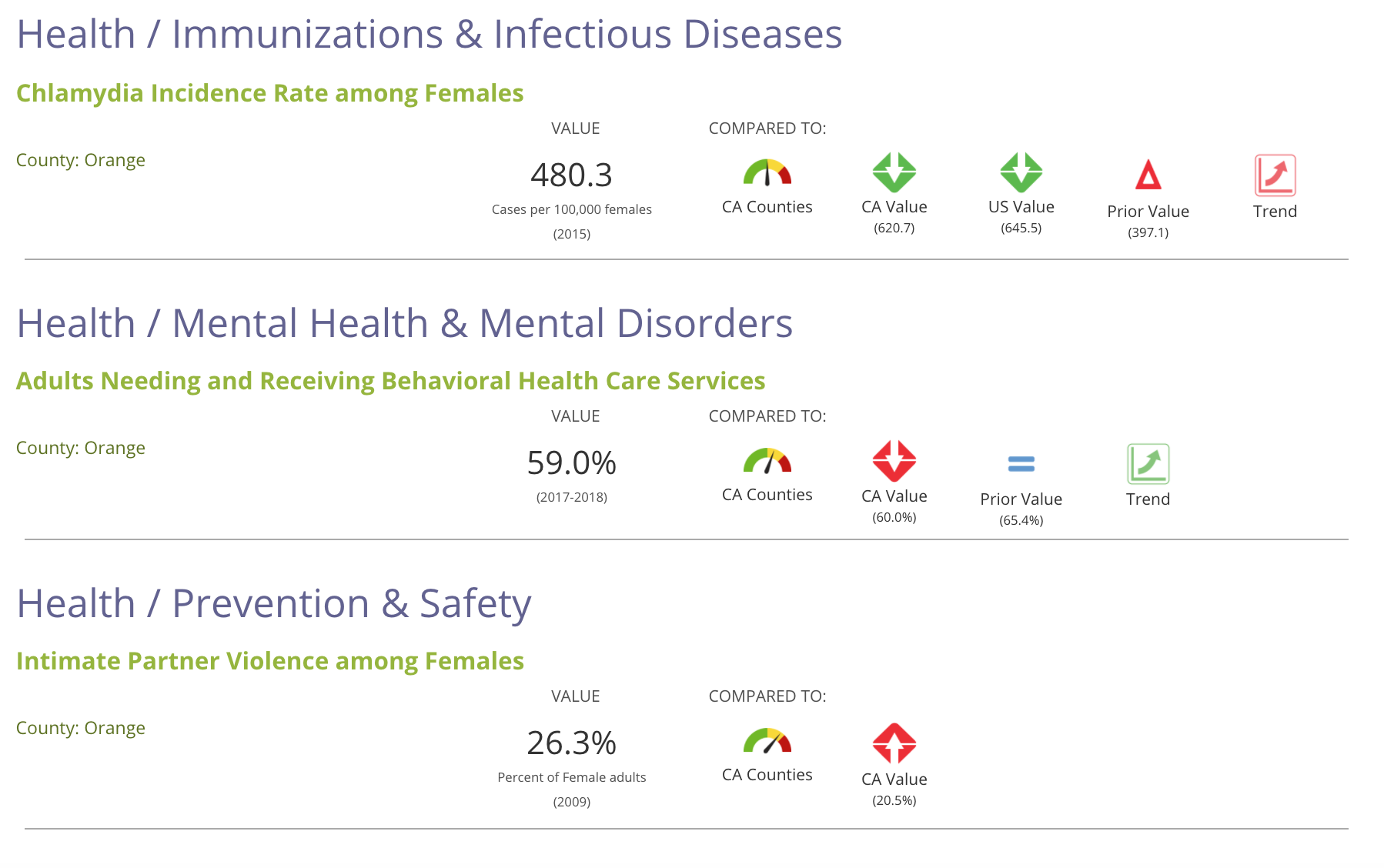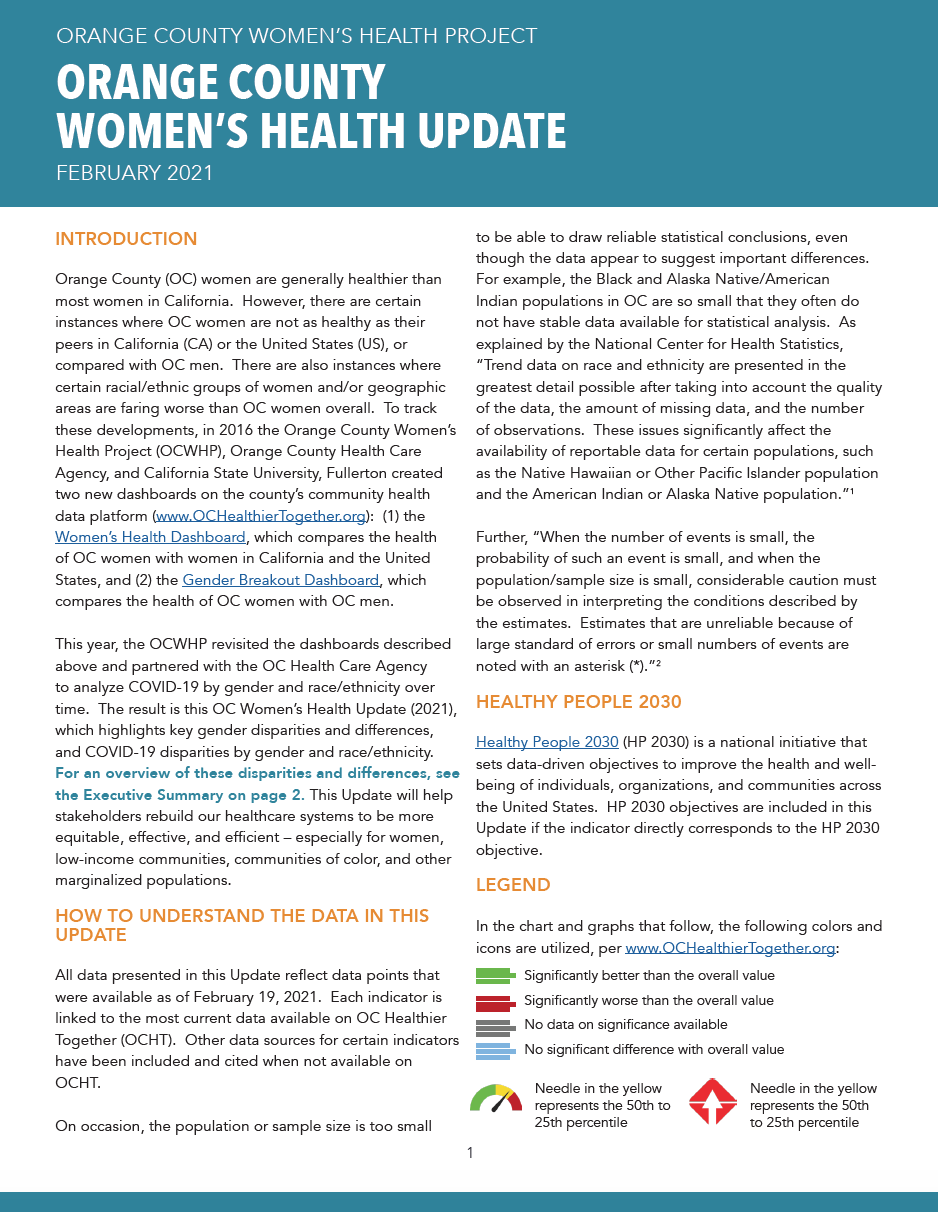Orange County Community Health Data Dashboards
The Orange County Women’s Health Project (OCWHP)
suspended our operations in January 2024.
The following information is provided for archival purposes only, and some links may no longer work.
About
In order to easily identify women’s health disparities, the OCWHP partnered with the Orange County Health Care Agency and California State University at Fullerton, Department of Health Science to compile dozens of indicators into two dashboards on Orange County Healthier Together.
Women’s Health Dashboard
Gender Breakout Dashboard
Reports
Released March 2021, the Orange County Women's Health Update highlights key health and COVID-19 disparities by gender and race/ethnicity in Orange County.
Findings at a Glance:
While OC women are generally healthier than most, they are experiencing disparities in breast cancer, cervical cancer, mental health, heart health, and aging.
Hispanic women are experiencing significantly higher COVID-19 infection rates than all other gender and race/ethnicity groups in Orange County.
The COVID-19 pandemic has exposed and exacerbated existing inequities with regard to women’s employment, caregiving responsibilities, and violence in the home.
Orange County must aggressively collect and analyze community health and COVID-19 data by gender, sexual orientation, and race/ethnicity; invest in culturally sensitive outreach and navigation to engage vulnerable communities; and provide prevention and early intervention strategies that can improve health outcomes and reduce disparities affecting women, especially women of color, in the county.
We hope this Update will help Orange County rebuild our healthcare systems to be more effective, efficient, and equitable – especially for women, low-income communities, people of color, the LGBTQ community, and other marginalized populations.




